Monday, 3:45pm
24 July 2023
Badges of Britain
Martyn Routledge’s The Beautiful History is a sporting ode to the history of Britain, writes Daniel Shannon.
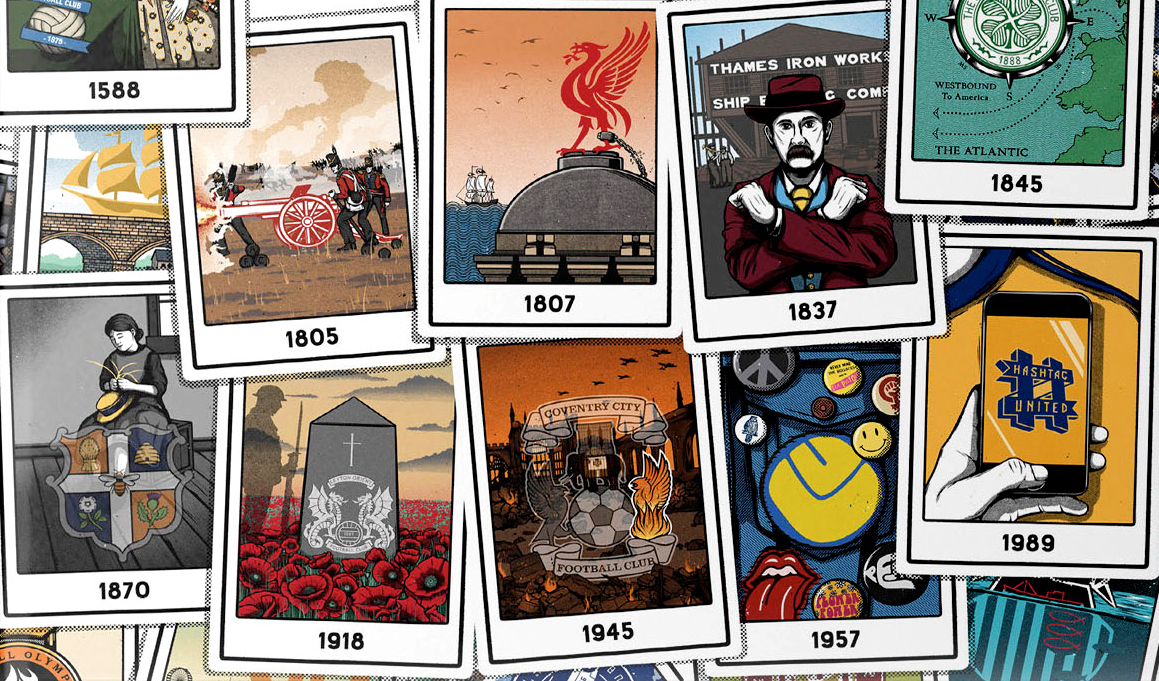
The visual culture around football is a subject Martyn Routledge knows more about than most, writes Daniel Shannon. The designer has explored the beautiful game through various publishing projects since founding his studio, Mr. Creative, in 2016.
His previous book The Beautiful Badge is a direct precursor to The Beautiful History, which follows in a similar tone, presenting a history of Britain through the crests of football teams. I expected something in the vein of a logo compendium book, but perhaps it is because Pitch Publishing’s release is not a design book for design lovers – or even a football book for football lovers – that Routledge saw fit to kick in the other direction. The Beautiful History is a history book first and foremost.
Each spread presents a short origin story of an emblem, such as ‘the imp’ of Lincoln City FC (pictured). Top. Illustrations by Adam Forster featured on the cover of The Beautiful History.
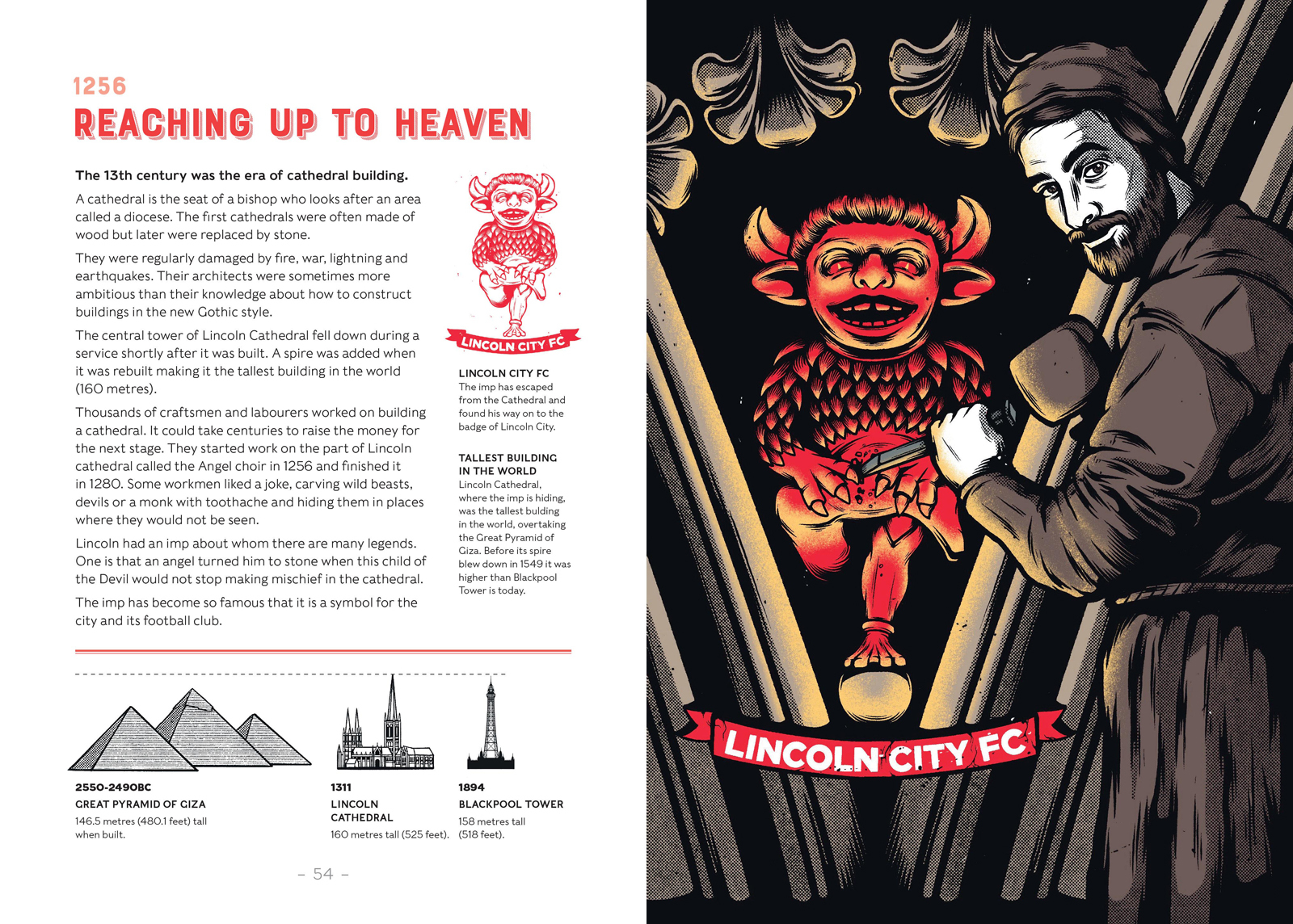
Arranged chronologically across nine chapters, readers are taken on a journey through Roman, Viking, Tudor, Georgian and Victorian Britain via a series of intriguing micro-histories. Each, it transpires, not only inspired a football team badge, but shaped the nation at large.
Illustrator Adam Forster places team badges directly into these wider historic scenes, joyfully bringing them to life. This is at its most successful where the emblem in question has a central pictorial element, enabling an elegant merging of history and crest. The three lions, for instance, sits proudly on Richard I’s shield, yet is simultaneously recognisable as the England badge. A Suffolk Punch, representing Ipswich Town, ploughs a field; the club’s local agricultural roots made clear. Heraldic designs are less easily assimilated in their respective scenes, though these are few and far between. With more than 60 full page illustrations and dozens more in support, Forster’s efforts form a substantial body of work in their own right, each drawn in a style the illustrator has refined since graduating from Plymouth University in 2016, combining the lo-fi, analogue aesthetic of linocut printmaking with a half-tone screen effect.
Adam Forster illustrated the history of each team badge. On the left is the thistle, national flower of Scotland which is used by many Scottish clubs. Right image shows the cannon from Arsenal FC badge.
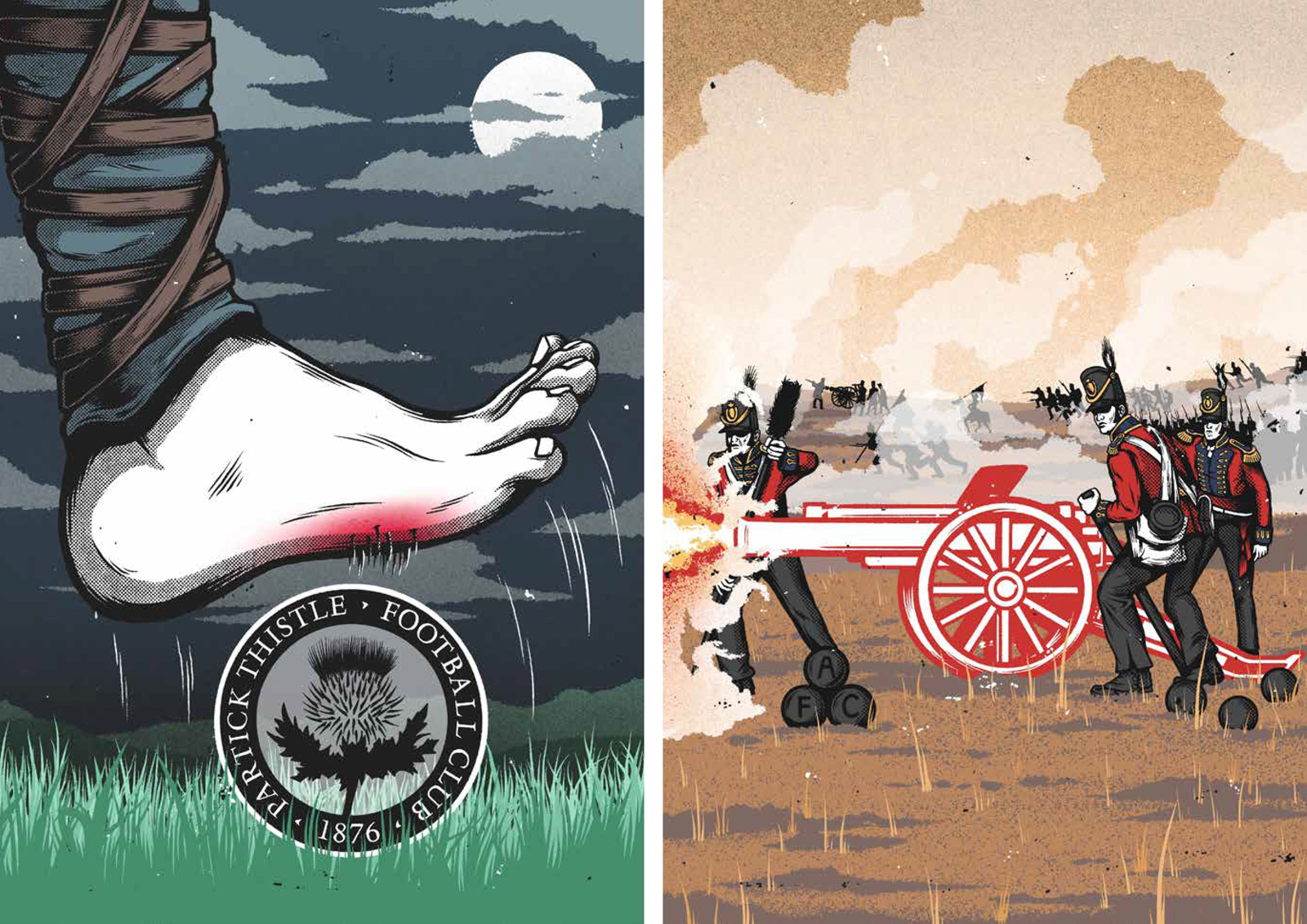
Running neatly alongside the illustrations are researcher Elspeth Wills’ more sober anecdotes, many of which are charmingly obscure. She writes in plain English and sticks to the history, freeing up Forster to make the link to the beautiful game. As a result, The Beautiful History will appeal to those who aren’t so enamoured by football without short-changing those who are.
Left. Two crossed hammers from Victorian era feature in West Ham emblem. Right. Leeds United took a typographic approach in 1973, using letter ‘LU’ as their emblem. Note the Anti-Nazi badge at the top designed by David King (see Eye nos. 48, 95 and 101)
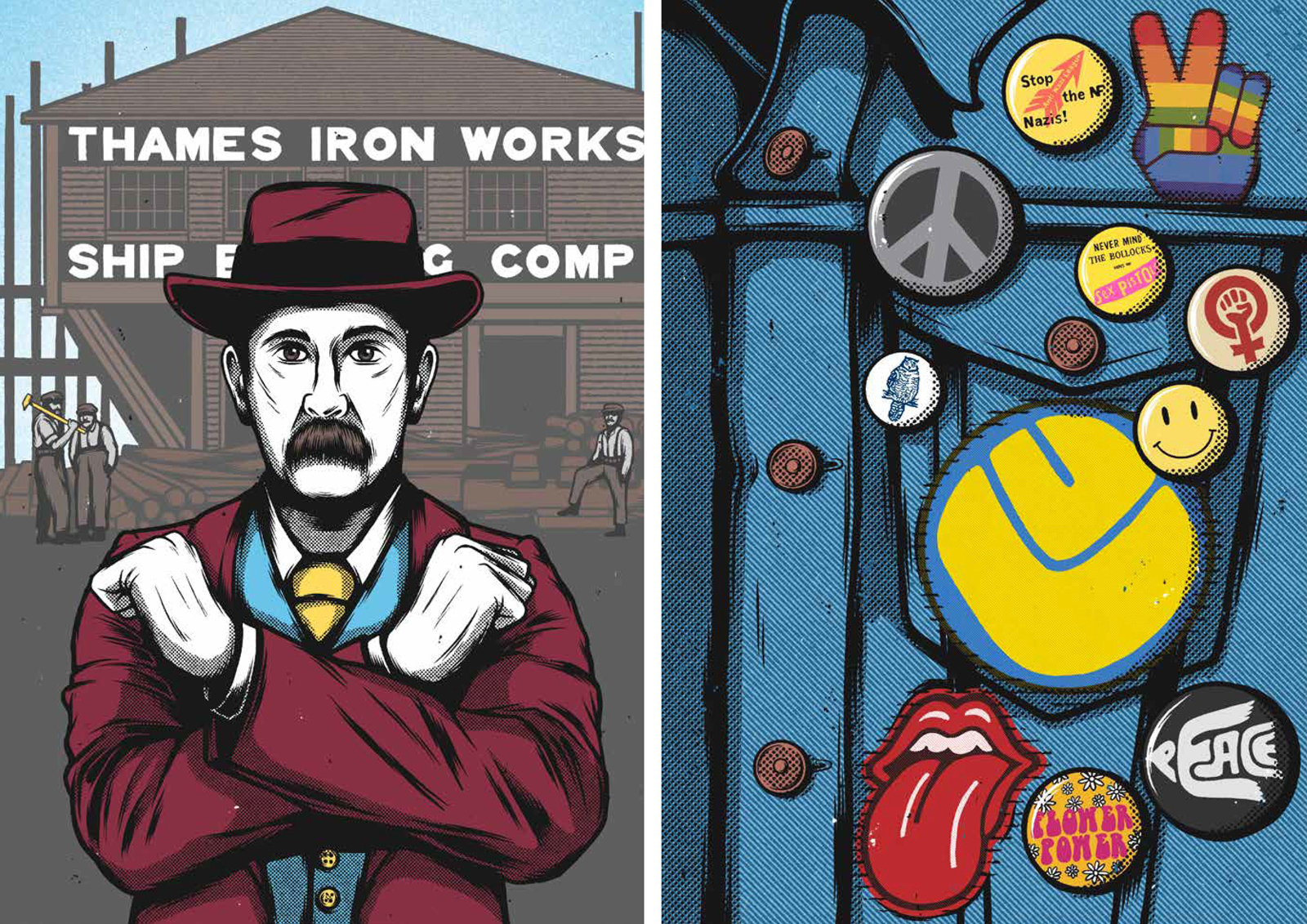
Most football badges are one-dimensional, referencing local industrialists, landmarks, or royalty. But it seems unlikely that Barnsley’s founders, for example, were so enthralled with the House of York that the badge could be nothing other than a white rose. While I miss some critical insight into the crests’ origin stories, The Beautiful History succeeds in its game plan, presenting a richly illustrated whistle-stop tour without ever wandering out of position.
Cover of The Beautiful History (Pitch Publishing, £16.99) by Martyn Routledge and Elspeth Wills with illustrations by Adam Forster.
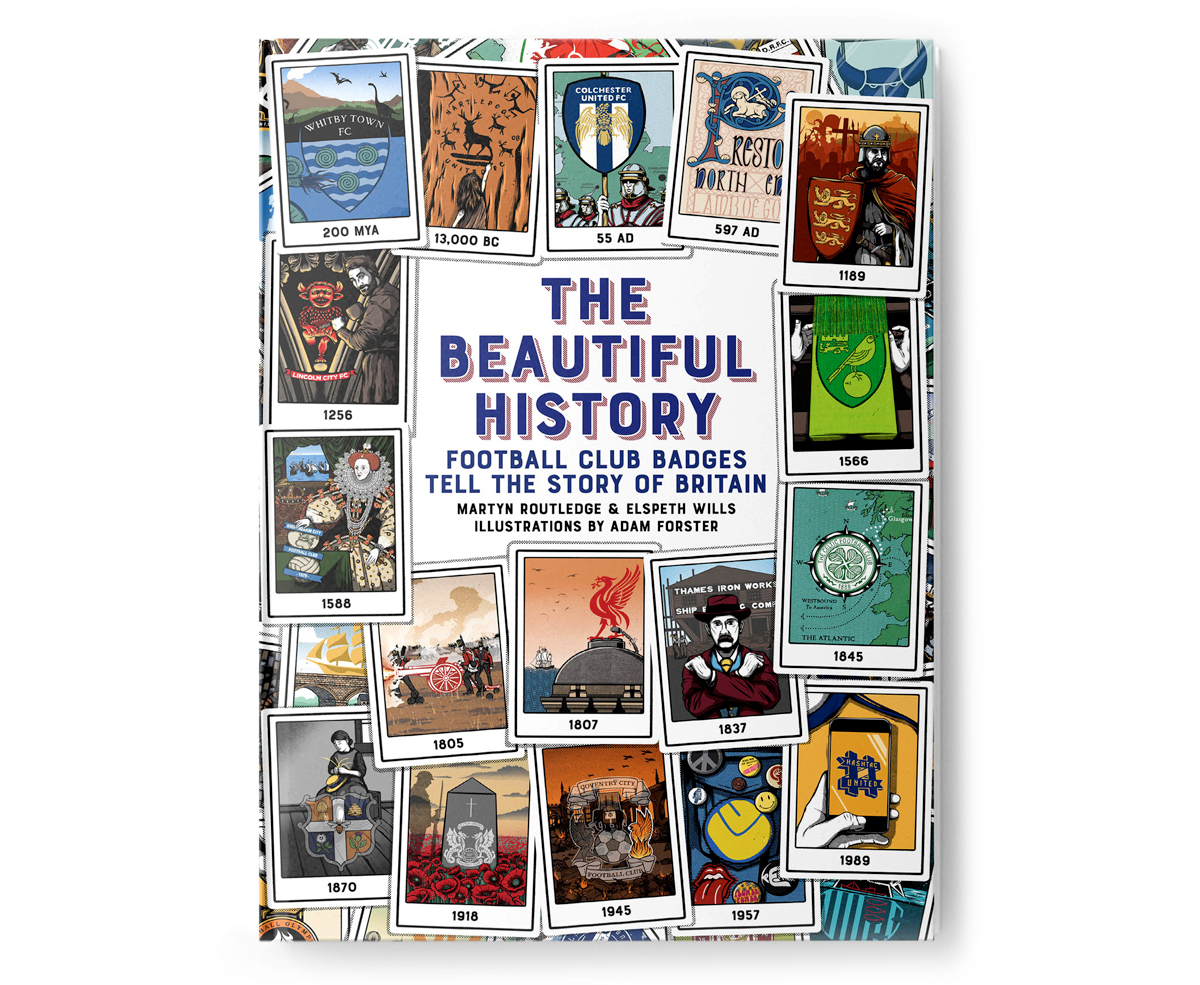
Daniel Shannon, designer, London
Eye is the world’s most beautiful and collectable graphic design journal, published for professional designers, students and anyone interested in critical, informed writing about graphic design and visual culture. It is available from all good design bookshops and online at the Eye shop, where you can buy subscriptions and single issues.
